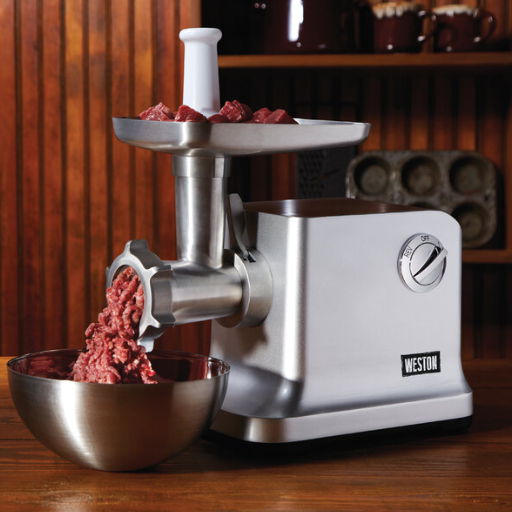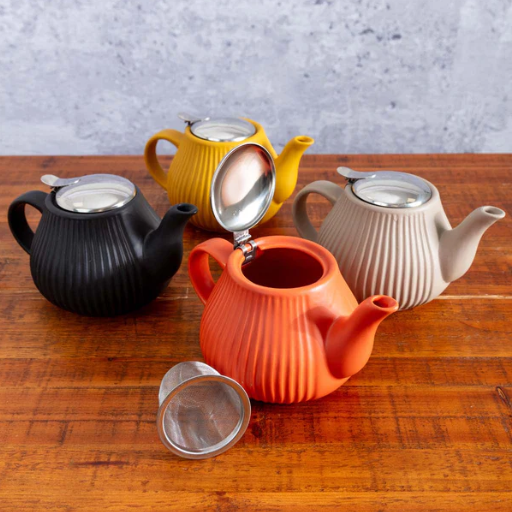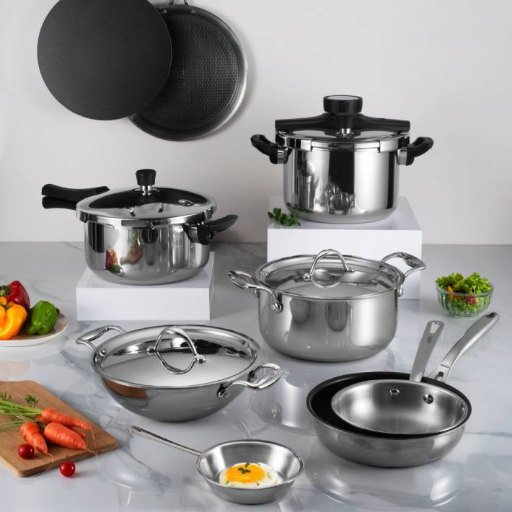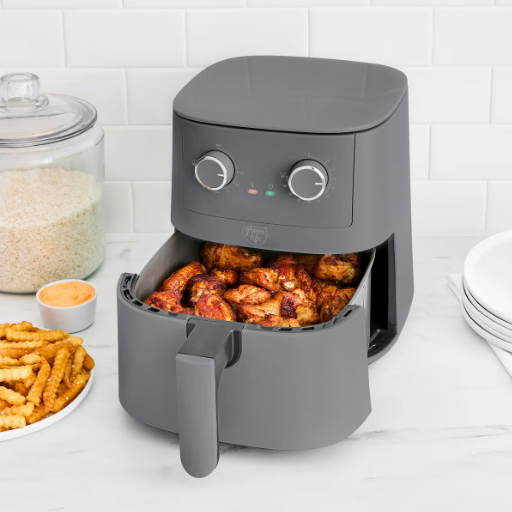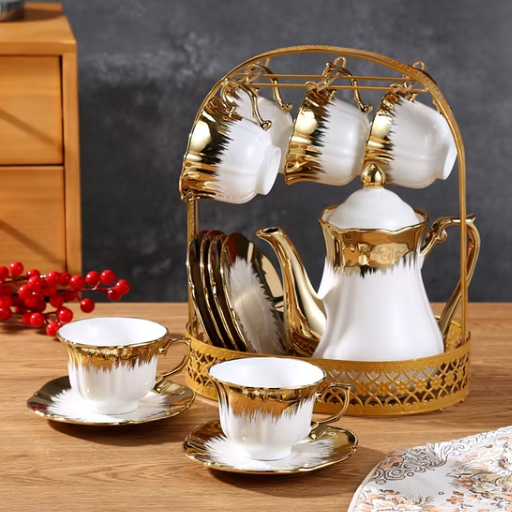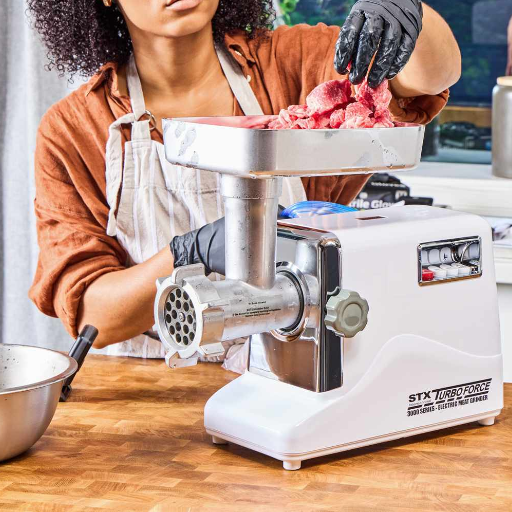Welcome to our comprehensive guide on ceramic air fryers, designed specifically for health-conscious individuals looking to revolutionize their cooking experience. This article provides an in-depth overview of how ceramic air fryers work, their unique health benefits, and why they are an excellent choice for those aiming to reduce oil consumption and prepare nutritious meals. We will also explore the key factors to consider when selecting the best ceramic air fryer, including material safety, cooking capacity, energy efficiency, and advanced features. By the end of this guide, you’ll have all the knowledge you need to make an informed decision and identify the ceramic air fryer that best aligns with your lifestyle and dietary goals.
What is a Ceramic Air Fryer and How Does it Work?

A ceramic air fryer is a kitchen appliance designed to cook food with minimal oil by utilizing hot air circulation technology. It features a ceramic-coated cooking basket or surface, which is non-stick, non-toxic, and free from harmful chemicals like PTFE and PFOA. The air fryer works by using a powerful fan to circulate hot air rapidly around the food, creating a crispy exterior similar to deep-fried dishes, but with significantly lower fat content. The ceramic coating enhances heat distribution, ensures easy cleanup, and provides a safer cooking surface. This makes ceramic air fryers an efficient and health-conscious choice for modern cooking.
Understanding the Air Fryer Technology
An air fryer is simply an oven equipped with a convection fan, which aids in cooking food items by using a fan to transfer hot air at a high speed. Consequently, the oil imbibed by the food is considerably lower in comparison to frying, as the rapid movement of air is capable of achieving frying temperatures. A combination of consistent temperature and airflow design enables the oil-less frying technology. The appliances’ performance is further enhanced when uniformly heated and a more durable ceramic coating is used, eliminating the risks of PTFE and PFOA. Thus making air fryers a practical addition to any kitchen.
Benefits of Ceramic Coating in Air Fryers
Users who favor their health as well as safety concerns often prefer ceramic-coated air fryers which have several benefits. One of the advantages is that they are non-toxic since ceramic coatings do not contain PTFE, PFOA, or any other harmful chemicals that may emit toxic fumes at elevated temperatures. Furthermore, cleaning is made easier because the smooth ceramic surface makes food release effortless while cooking sprays, and excessive oil usage is drastically minimized. Another advantage is that ceramic has superior heat distribution. This is because ceramic retains heat, dispersing it evenly which works towards efficient and consistent cooking. In addition, the appliance’s performance is not compromised due to the scratch-resistant and durable nature of ceramic coatings. These benefits combined show why ceramic-coated air fryers are practical as well as health-promoting.
How Hot Air Circulation Cooks Your Food
The oil-free cooking method employed in an air fryer is known as rapid air technology, whereby hot air is circulated and cooked at a high temperature. There is a combination of a high-power fan with a built-in heating element that raises a food’s surface temperature to 100 degrees centigrade along with its high-speed rotation within the electric fan. This forms a rigid external crust which is golden brown while the internal portion remains soft. The procedure reduces the necessity of oil immersion, hence offering a more nutritious option. Additionally, removed oil is also absent from the food, increasing its nutritional value. An air fryer also helps in distributing oil and food evenly.
Why Choose a Non-Toxic Air Fryer?

Users’ health is guaranteed with a non-toxic air fryer as the harmful chemicals and coating such as Teflon, which releases toxic fumes when overheated, are omitted. A non-toxic air fryer enables users to leach out harmful materials into the food prepared alongside being safe, environmentally friendly, durable, and easier to clean making them a long-lasting sustainable choice. Enjoying the benefits of modern air frying technology while improving your general well-being is achieved with a non-toxic air fryer.
Are Air Fryers Toxic? Exploring PFAS and Teflon
If the non-stick surfaces of air fryers are coated with either Teflon or PFAS (which stands for per- and poly-fluoroalkyl substances), they may present health concerns. The non-stick portion made of Teflon, a polymer derived from PTFE (polytetrafluoroethylene), can produce fumes that are harmful when heated above 450 F. These fumes are capable of giving humans a flu-like sickness known as ‘Teflon flu’ while also being fatal for birds. PFAS which is utilised for providing water and grease resistance to coatings, has been known to cause serious health problems in the future like hormone imbalance, cancer, and pollution.
While ceramic coating, stainless steel, or tempered glass are used in non-toxic air fryers, these materials do not release dangerous chemicals and therefore provide a safer cooking environment. It becomes necessary to check the manufacturer’s materials and certifications for Teflon, PFAS, and several harmful chemicals when purchasing an air fryer. These models with stringent regulations are beneficial for an individual’s health and for the environment as well.
Health Benefits of Non-Toxic Air Fryers
The use of air fryers that are considered ‘non-toxic’ improves safety while cooking meals due to the fact that Teflon, PFAS, and non-stick coatings are removed and replaced with much safer materials like Ceramic, stainless glass, or tempered glass. These materials also do not emit any toxic fumes at extreme temperatures.
These air fryers also use little to no oil which reduces fat intake and helps retain the natural taste and nutrients of food. This also helps reduce calorie intake which can aid in the management of weight and improvement of cardiovascular health. Additionally, non-toxic models often have superior temperature control, ensuring that food is cooked thoroughly without producing unhealthy associated byproducts with extreme frying such as acrylamides, a product which is linked to frying foods at very high temperatures.
Toxic air fryers also use non-toxic materials, making them more appropriate for environmentally conscious customers as they reduce chemicals emitted and utilize eco-friendly materials. Overall, non-toxic air fryers provide healthier cooking conditions, long-term health benefits, and reduced environmental impact which makes them best suited for health oriented families.
Comparison with Stainless Steel Air Fryers
The main difference between non-toxic air fryers and non-toxic air fryers lies in the construction material and its effects on safety during cooking as well as performance. Stainless steel air fryers usually have a good reputation due to the stainless steel’s rust-resistant properties; thus giving it a longer life span. In most cases, they tend to scratch and become worn over time less than is usual for heavy or frequent-use appliances.
Nonetheless, non-toxic air fryers might benefit from the health aspect of this comparison. While it is a fact that stainless steel models perform well in cooking, they also have the potential to leech metals and require additional coatings that may be harmful as time passes. Non-toxic air fryers as the name suggests concentrate on fryers free of hazardous chemicals like PTFE or PFOA and therefore there is little to no emission of toxic substances during cooking non-toxic air upholstery dryers.
Both types of appliances can achieve excellent frying and crisping results at lower temperatures and with less oil than usual. Non-toxic models are preferred by families where health matters the most as well as eco friendly material and construction. Stainless steel air fryers appeal to a group of masochistic consumers looking for roughneck appliances. The decision comes down to how much consideration does the individual give on the aspect of health, durability and environmental destruction.
What to Look for in the Best Non-Toxic Air Fryers?

The best non-toxic air fryer requires consideration of several aspects. To begin with, check that the appliance is devoid of toxic substances such as PTFE and PFOA because this would mean there is no risk of dangerous off-gassing during cooking. The safest and most durable appliances feature ceramic-coated parts or stainless steel interiors. Additionally, a non-toxic air fryer should have an effective temperature control system for consistent results while using the least amount of power. Moreover, confirm the appliance’s capacity to suit your cooking needs so that the required portions can be prepared without too many cooking cycles. Finally, look for certification marks and safety standards that endorse the air fryers as meeting various regulations concerning health and environmental issues. All of these guarantees combine to provide safer, healthier, and sustainable cooking solutions.
Essential Features of a Ceramic Air Fryer
Ceramic air fryers are renowned for their non-toxic properties and efficient performance. The following features are essential when evaluating a ceramic air fryer:
- Non-Toxic Coating – The primary advantage of ceramic-coated air fryers is the absence of harmful chemicals such as PTFE and PFOA. This ensures a safer cooking experience without the risk of toxic fumes at high temperatures.
- Durability and Heat Resistance – Ceramic coatings are highly resistant to heat and wear, offering long-term durability while maintaining consistent performance. They are also scratch-resistant, which enhances their lifespan and functionality.
- Ease of Cleaning – The naturally non-stick surface of ceramic coatings simplifies cleaning. Residual oils and food particles can be easily wiped off without requiring abrasive scrubbing, making maintenance quick and efficient.
- Even Heat Distribution – High-quality ceramic air fryers are designed to distribute heat uniformly, ensuring that food is cooked evenly. This feature eliminates the risk of undercooked or overcooked portions, offering consistent results.
- Energy Efficiency – Most ceramic air fryers are engineered for efficient energy consumption, reducing power usage while maintaining optimal cooking temperatures. This makes them an environmentally friendly and cost-effective choice.
- Safety Features – Look for air fryers with certifications such as UL or ETL, which guarantee compliance with safety and health standards. Auto-shutoff functions and temperature regulators also enhance operational safety.
By considering these features, you can choose a ceramic air fryer that aligns with your health priorities, energy efficiency goals, and cooking preferences while ensuring a non-toxic, user-friendly experience.
Evaluating Nonstick Coating and Durability
Prioritize coating quality and durability when evaluating the nonstick features of a ceramic air fryer. The most beneficial aspect of a nonstick coating is to not allow foods to stick which makes cleaning easier and less oil is required in the cooking process. Ceramic-based coatings are the best ones to look for as they do not contain PTFE or PFOA which is safer for users during cooking.
Material quality will always affect the durability of the air fryer. Scratch and flake-resistant high-end ceramic coatings withstanding high temperatures are somewhat a guarantee, but still durability in the long term varies. Also, take into account consumer opinions and the warranties provided by the manufacturer as a measure of the overall trustworthiness of a product. Investing in an air fryer that incorporates reinforced ceramic layers or other advanced heat-resistant materials will allow the appliance to last longer and make cooking easier and safer.
Choosing a Dishwasher-Safe Option for Easy Cleanup
With air fryers, look for components such as stainless steel or heat-resistant plastic features as these are most often marked as dishwasher safe. If possible, verify that the ceramic e-coated baskets and trays are compatible with dishwashers as they will be conserved over time. Also, make sure that all other detachable parts state the dishwasher compatibility so they are not damaged through wear or tear. Most likely these features will be covered in user reviews which are useful in making reliable purchasing decisions. A product that is simple to disassemble for cleaning and maintains its quality through dishwasher use will greatly improve longevity and convenience.
How to Cook with a Ceramic Air Fryer?

Using a ceramic air fryer is straightforward and efficient, provided you follow a few key steps. Begin by preheating the air fryer if your recipe requires it, as this ensures even cooking. Next, lightly coat the ceramic basket with a small amount of oil or cooking spray to prevent food from sticking. Arrange ingredients in a single layer inside the basket to allow proper air circulation, avoiding overcrowding. Set the appropriate temperature and cooking time as recommended by your recipe or the user manual, keeping in mind that ceramic surfaces distribute heat evenly for consistent results. Midway through cooking, shake or flip the food for uniform crispness. After use, allow the air fryer to cool before cleaning, ensuring any removable ceramic components are hand-washed or placed in the dishwasher, depending on their compatibility. This simple procedure allows you to achieve optimal results efficiently with minimal hassle.
Popular Recipes: From Chicken Wings to French Fries
Ceramic air fryers are widely praised for producing delicious and healthier versions of popular fried foods. Among the most common recipes are crispy chicken wings, golden French fries, and roasted vegetables. Here’s a breakdown of essential tips for achieving the best results with these recipes:
- Chicken Wings: Preheat the air fryer to 375°F (190°C) and pat the wings dry to ensure crispness. Season with spices, or coat with your preferred marinade, and arrange in a single layer. Cook for 20-25 minutes, flipping halfway through for even browning. For extra crispiness, lightly spray with oil before cooking.
- French Fries: Cut potatoes evenly into sticks and soak them in cold water for at least 30 minutes to remove excess starch. Pat them dry and toss with a minimal amount of oil and seasoning. Air fry at 400°F (200°C) for 15-20 minutes, shaking the basket halfway for uniform results.
- Roasted Vegetables: Chop vegetables like carrots, zucchini, or bell peppers into uniform pieces, then season with oil, salt, and spices. Cook at 375°F (190°C) for 10-15 minutes, shaking occasionally to prevent sticking and ensure even roasting.
By following these guidelines, you can create flavorful, crisp, and healthier versions of your favorite dishes quickly and efficiently.
Tips for Achieving Crispy Results
- Preheat the Air Fryer: Always preheat your air fryer before cooking. A properly heated air fryer ensures immediate searing of food surfaces, helping to lock in moisture while creating a crispy exterior.
- Avoid Overcrowding: Arrange food in a single layer with space between pieces. Overcrowding prevents hot air from circulating effectively, leading to uneven cooking and less crispiness. For larger portions, cook in batches to maintain optimal results.
- Use Minimal Oil: Lightly coat your food with a thin layer of oil to enhance browning and crisping. Use spray oil for even application and avoid soaking food, which can lead to fogginess.
- Dry Ingredients Thoroughly: Pat wet ingredients, like potatoes or chicken wings, completely dry before seasoning or cooking. Removing excess moisture ensures a crunchier texture during air frying.
- Toss or Flip Ingredients Midway: For even cooking, shake the air fryer basket or flip the food halfway through the cooking process. This promotes uniform crisping on all sides.
- Adjust Temperature for Specific Foods: Crispier results often require higher temperatures, typically between 375°F and 400°F (190°C – 200°C). Follow specific recipes for best practices tailored to different ingredients.
By incorporating these tactics, you can maximize the air fryer’s potential to deliver golden-brown, crispy foods with minimal effort.
Adjusting Cooking Time and Temperature Settings
Adjusting time and temperature when using an air fryer requires an understanding of how both variables work together. The rapid movement of air and the comparatively higher temperatures within air fryers lead to faster cooking compared to normal ovens. A recipe that is initially intended to be baked in a traditional oven can be modified by reducing the temperature by 25 degrees and the time spent cooking to 20-30 percent earlier than what is stated in the recipe. As an example, a recipe that cooks in the oven for 30 minutes at a temperature of 400 degrees would be done in an air fryer set to 375 degrees after 20-25 minutes.
You should also consider the kind of food and its portion. Foods with smaller dimensions, such as fries and chicken tenders, require frequent monitoring. Being dense, meat takes longer to cook and can be flipped occasionally. Certain air fryer models come with preset options for common meals like vegetables, frozen snacks, or proteins, which could be an approximate guide. When in doubt, look for the air fryer manual, or check the charts designed specifically for air frying time, temperature, and food portions. It might take a few attempts, but eventually, you will learn how to modify the air frying technique to match the device and the food.
Maintaining and Cleaning Your Ceramic Air Fryer

For proper maintenance and cleaning of your ceramic air fryer, start by unplugging the device and letting it completely cool. For the basket and tray, wash them with warm soapy water. If food particles are still stuck, allow them to soak for a couple of minutes and go over them with a non-scratch sponge, which helps protect the ceramic coating. Wipe down the inside and outside of the air fryer with a moist towel to remove any buildup; do not use strong chemicals or scrub excessively. Use a baking soda and water mixture for tougher grease stains. Make sure the components have dried before reassembling the device. Routine maintenance like cleaning after every use, inspecting for wear and tear, and filing it away properly will ensure a longer life for your air fryer.
Steps for Proper Cleanup and Maintenance
- Unplug and Cool Down
Always start by unplugging the air fryer and allowing it to cool completely to avoid burns or electrical hazards.
- Remove and Clean Detachable Parts
Take out the basket, tray, and any other removable components. Wash them with warm soapy water using a soft sponge to prevent damage to the ceramic coating. For stubborn residues, soak the parts for a few minutes before scrubbing gently.
- Clean the Interior and Heating Element
Wipe the interior with a damp, non-abrasive cloth. Use a soft brush or toothbrush to carefully clean around the heating element, ensuring no debris or grease buildup remains.
- Tough Stains and Grease
For more persistent grease stains, apply a paste made of baking soda and water. Allow it to sit for a few minutes, then scrub gently and rinse thoroughly.
- Wipe the Exterior
Use a moist microfiber cloth to clean the exterior. Do not use harsh chemicals or abrasives to maintain the finish.
- Dry Completely Before Reassembling
Ensure all components are completely dry before putting them back together. Once dry, reassemble and store the air fryer in a clean, dry space.
- Regular Maintenance
Inspect for any signs of wear, such as peeling coating or loose parts. Cleaning immediately after each use will prevent buildup and prolong the lifespan of your air fryer.
Avoiding Harmful Chemicals in Cleaning
Avoiding harmful chemicals in cleaning involves identifying and eliminating substances that pose risks to health and the environment. Common harmful chemicals in cleaning products include ammonia, chlorine bleach, phthalates, and volatile organic compounds (VOCs), which can cause respiratory issues, skin irritation, and environmental contamination. To reduce exposure, opt for products labeled as non-toxic, biodegradable, or containing plant-based ingredients. Alternatives such as vinegar, baking soda, and castile soap provide effective cleaning capabilities without hazardous effects. Additionally, thorough ventilation during cleaning and adherence to product instructions can minimize risks associated with chemical usage. Prioritizing safer options not only protects personal health but also contributes to environmental preservation.
Extending the Life of Your Kitchen Appliance
Appliances in the kitchen can last longer if they are properly maintained and operated. Like any piece of technology, these devices require regular cleaning to enhance and prolong performance. For instance, ovens and microwaves should be cleaned after every use; also, refrigerator coils should be dusted from time to time to ensure efficient cooling. Alongside this, make sure that you are using appliances according to guidelines. Overloading the dishwasher or using incorrect cycles in a washing machine increases the chances of faults. Replace gaskets in pressure cookers or water filters in refrigerators on a timely basis by the manufacturer’s schedule. Save energy when the appliance is not in use by unplugging or turning off the device. Having such appliances in the kitchen can result in a lot of functionality as well as improved durability.
References
Frequently Asked Questions (FAQ)
Q: What are the benefits of using a ceramic air fryer for health-conscious cooking?
A: Ceramic air fryers, especially those with a non-stick coating, allow you to cook with less oil while still achieving crispy and juicy results. They are an excellent choice for healthy air fryer recipes because they reduce fat content compared to traditional deep fryers.
Q: How does a ceramic nonstick coating compare to other types of coatings in air fryers?
A: Ceramic nonstick coatings are a pfas-free and pfoa-free option that is considered safer for high temperatures. Unlike some traditional coatings, they do not contain ptfe and are less likely to release harmful chemicals when heated, making them a great choice for health-conscious cooking.
Q: Are there any advantages to using an air fryer with a stainless steel interior?
A: Air fryers with stainless steel interiors are known for their durability and resistance to rust and staining. They also tend to be easier to clean compared to other materials, maintaining their appearance and function over time.
Q: What should I consider when choosing the best air fryer for my kitchen?
A: When selecting an air fryer, consider factors like size, cooking functions, ease of cleaning, and whether it has a ceramic nonstick coating. Compact air fryers are ideal for smaller kitchens, while digital air fryers offer precise controls and a range of functions.
Q: How does a hot air fryer work to cook food?
A: A hot air fryer circulates hot air around the food placed in the air fryer basket, cooking it evenly and quickly. This method uses less oil and achieves a similar texture to fried food without the need for deep frying.
Q: What are some tips for using an air fryer effectively?
A: To get the best results from your air fryer, ensure you do not overcrowd the air fryer basket, preheat the unit if required, and shake or turn the food halfway through cooking. Using parchment paper can also prevent food from sticking to the basket.
Q: Can I reheat food in an air fryer, and if so, how?
A: Yes, you can reheat food in an air fryer. It’s best to set the temperature to a lower setting, around 300°F, and reheat for a few minutes until the food reaches your desired warmth. This method helps maintain the food’s original texture.
Q: Are air fryer baskets dishwasher safe?
A: Many air fryer baskets are dishwasher safe, making them easy to clean. However, it’s important to check the manufacturer’s instructions to ensure specific components are suitable for dishwasher use.
Q: What makes the Ninja Air Fryer Pro 4-in-1 a great air fryer choice for 2024?
A: The Ninja Air Fryer Pro 4-in-1 is a compact air fryer known for its versatility, offering multiple cooking functions such as air frying, roasting, reheating, and dehydrating. It features a digital control panel for precise cooking, making it a popular choice in 2024.
Q: Can I use my ceramic air fryer as a toaster oven or convection oven?
A: Some ceramic air fryers come with cooking functions that allow them to be used similarly to a toaster oven or convection oven. They can bake, roast, and toast food, providing a versatile cooking solution on your countertop.

